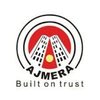Filter interviews by
Nila Infrastructures Project Manager Civil Interview Questions and Answers
Nila Infrastructures Project Manager Civil Interview Experiences
1 interview found
Project Manager Civil Interview Questions & Answers
posted on 30 Jun 2024
(2 Questions)
- Q1. Area sqft works ?
- Ans.
Area sqft works refers to the total square footage of work to be completed in a project.
Area sqft works is a measurement used in construction projects to determine the total amount of space that needs to be worked on.
It helps project managers estimate the amount of materials, labor, and time needed to complete the project.
For example, if a project involves building a house, the area sqft works would include the total s...
- Q2. Duration of the work ?
Top trending discussions






Interview questions from similar companies

I applied via Walk-in and was interviewed in Aug 2024. There were 2 interview rounds.
General knowledge skills
(5 Questions)
- Q1. Your previous company experience
- Ans.
Worked as a Project Engineer at a construction company for 5 years.
Managed multiple civil engineering projects simultaneously
Coordinated with architects, contractors, and clients to ensure project success
Performed site inspections and quality control checks
Prepared project schedules and budgets
Resolved any issues or conflicts that arose during construction
- Q2. Asking your previous work experience
- Q3. Structure related questions
- Q4. Finishing related question
- Q5. Water proofing related question and Bbs
Interview Preparation Tips

I applied via Naukri.com and was interviewed in May 2024. There was 1 interview round.
(2 Questions)
- Q1. Privious project details
- Q2. Steel weight of various dia
- Ans.
The weight of steel varies based on its diameter, with thicker diameters generally weighing more.
Steel weight increases with larger diameter due to more material being used
Calculate weight using formula: Weight = (Diameter^2) x Length x 0.006165
Example: A steel rod with 1 inch diameter and 10 feet length weighs approximately 3.7 lbs
Interview Preparation Tips

Civil Site Engineer Interview Questions & Answers
Raymond Realty Limitedposted on 21 Sep 2023
I applied via Walk-in and was interviewed in Aug 2023. There were 3 interview rounds.

Be confidence, Be positive
(6 Questions)
- Q1. About civil and execution work
- Q2. RCC,Shuttering, finishing, safety, quality
- Q3. -how many types of binding? -which grade of steel use for construction? -how to safely work on site?
- Ans.
There are two types of binding in construction - temporary binding and permanent binding. Grade of steel used for construction varies depending on the structural requirements. Safety on site can be ensured by following proper protocols and wearing appropriate safety gear.
Two types of binding in construction: temporary binding (e.g. wire binding) and permanent binding (e.g. welding)
Grade of steel used for construction d...
- Q4. -what's the process or start construction? -
- Ans.
The process of starting construction involves planning, obtaining permits, site preparation, foundation construction, and building the structure.
Develop a detailed construction plan outlining the scope, schedule, and budget.
Obtain necessary permits and approvals from local authorities.
Clear the construction site and prepare it for building.
Construct the foundation of the structure, which may involve excavation and pour...
- Q5. -how to lap columns vertical & Beam bars?
- Ans.
Columns and beam bars can be lapped vertically by overlapping the bars and securing them with appropriate reinforcement ties or splices.
Overlap the vertical bars by a certain length as per design requirements
Secure the overlapped bars using reinforcement ties or splices
Ensure proper alignment and spacing of the lapped bars to maintain structural integrity
Follow the design specifications and guidelines for lapping colum
- Q6. -how check slab shuttering?
- Ans.
Slab shuttering can be checked by ensuring proper alignment, levelness, and support of formwork before pouring concrete.
Check alignment of formwork using a string line or laser level
Ensure levelness of formwork using a spirit level
Check support of formwork by inspecting props and braces
Verify dimensions and layout of slab formwork before pouring concrete
Interview Preparation Tips
- Civil Works
- Site Execution
- Finishing
- Quality Control
- Safety
Email: *****
Contact:XXXXX
I have 4+year experience

Project Engineer - Civil Interview Questions & Answers
Mahindra Lifespace Developersposted on 29 Jan 2024
I applied via campus placement at University Vishveshvaraya College of Engineering (UVCE) and was interviewed in Dec 2023. There was 1 interview round.
(2 Questions)
- Q1. What is density of steel
- Ans.
The density of steel is approximately 7.85 grams per cubic centimeter.
The density of steel is a measure of how much mass is contained in a given volume of steel.
It is commonly expressed in grams per cubic centimeter (g/cm³) or kilograms per cubic meter (kg/m³).
The density of steel can vary depending on the specific type and composition of the steel alloy.
For example, the density of carbon steel is typically around 7.85...
- Q2. Why men is dominant in site work than women?
- Ans.
Men are dominant in site work due to various societal and cultural factors.
Historically, construction and site work have been male-dominated industries.
Stereotypes and biases have led to fewer women pursuing careers in civil engineering and related fields.
Physical demands and safety concerns associated with site work may discourage some women from entering the field.
Lack of representation and mentorship for women in si...

Junior Engineer Civil Interview Questions & Answers
Labdhi Lifestyle Limitedposted on 10 Nov 2022
I applied via Company Website and was interviewed in Oct 2022. There were 2 interview rounds.

(2 Questions)
- Q1. 1.How to calculate concrete quantity in structure to ready for cas
- Ans.
Calculating concrete quantity for a structure
Determine the volume of the structure to be filled with concrete
Calculate the required concrete mix ratio
Multiply the volume by the mix ratio to get the total concrete quantity
Add an extra 5-10% to account for wastage and spillage
Consider the type of structure and its intended use when selecting the mix ratio
- Q2. What is steel density
- Ans.
Steel density is the mass per unit volume of steel.
Steel density is typically measured in kilograms per cubic meter (kg/m³).
The density of steel can vary depending on the alloy and composition.
The density of mild steel is around 7.85 g/cm³.
High-strength low-alloy (HSLA) steel can have a density of up to 8.05 g/cm³.
Stainless steel has a density of around 8 g/cm³.
Interview Preparation Tips

I applied via Naukri.com and was interviewed before Feb 2022. There were 2 interview rounds.

(2 Questions)
- Q1. Steel IS code, RCC, finishing, block work
- Q2. About DPC ,starter, aluminium formwork
Interview Preparation Tips

Civil Site Engineer Interview Questions & Answers
Arihant Superstructuresposted on 9 Oct 2021
I applied via Referral and was interviewed in Sep 2021. There were 4 interview rounds.
Interview Questionnaire
1 Question
- Q1. ,how to build high rise buildings
- Ans.
High rise buildings require careful planning, design, and construction techniques.
Site selection and analysis
Structural design and analysis
Foundation design and construction
Use of high-strength materials
Installation of elevators and other building systems
Safety measures for workers and occupants
Quality control and testing
Regular maintenance and inspections
Interview Preparation Tips

I applied via Walk-in and was interviewed in May 2024. There were 3 interview rounds.
(6 Questions)
- Q1. How many Concrete blocks is required for 100sft ?
- Ans.
The number of concrete blocks required for 100sft depends on the size of the blocks and the thickness of the wall being built.
The number of concrete blocks needed can be calculated by dividing the total area (100sft) by the area of one block.
The size of the concrete block and the thickness of the wall will determine the number of blocks needed.
For example, if each concrete block is 1ft x 1ft and the wall is 4 inches th
- Q2. What is Concrete density?
- Ans.
Concrete density is the mass per unit volume of concrete.
Concrete density is typically measured in kilograms per cubic meter (kg/m^3).
The density of normal concrete is around 2400 kg/m^3.
Higher density concrete, such as heavyweight concrete, can have densities up to 4000 kg/m^3.
Lightweight concrete, on the other hand, can have densities as low as 1600 kg/m^3.
- Q3. What is thickness for outer & inner walls Plastering?
- Ans.
The thickness for outer and inner walls plastering typically ranges from 12mm to 20mm.
The thickness of plastering for outer walls is usually around 15mm to 20mm.
The thickness of plastering for inner walls is typically around 12mm to 15mm.
The thickness may vary based on the type of wall surface and the desired finish.
It is important to ensure proper curing and finishing for a durable and aesthetically pleasing result.
- Q4. Which formwork is used in all ur recently worked companies ?
- Ans.
Various types of formwork have been used in my recently worked companies, including timber formwork, steel formwork, and aluminum formwork.
Timber formwork is commonly used for small to medium-sized projects due to its cost-effectiveness and flexibility.
Steel formwork is preferred for large and complex structures due to its durability and reusability.
Aluminum formwork is lightweight and easy to handle, making it suitabl
- Q5. What is the mix proportion of Plastering mortar?
- Ans.
The mix proportion of plastering mortar typically consists of 1 part cement to 3-4 parts sand.
The mix proportion of plastering mortar is usually 1:3 or 1:4 (cement:sand)
The mix can also include lime to improve workability and durability
Water is added to achieve the desired consistency for application
Example: A common mix proportion for plastering mortar is 1 part cement, 3 parts sand, and water as needed
- Q6. How many materials required in 1m3 Plastering mortar?
- Ans.
The materials required in 1m3 of plastering mortar include cement, sand, and water.
Cement is typically used in the ratio of 1:4 for plastering mortar.
Sand is used in the ratio of 3-4 times the amount of cement used.
Water is added as needed to achieve the desired consistency.
For example, for 1m3 of plastering mortar, you may need 0.25m3 of cement, 1m3 of sand, and water as needed.
Test was based on numerical, reasoning and verbal,Geometry,Profit & loss, Algebra, Simplication, trigonometry,Load calculation,etc
(5 Questions)
- Q1. What are the roles & responsible in Recently worked company ?
- Q2. They are analysing that Engineers are good consistency for their project work ?
- Q3. Are you able to work in other states & countries ?
- Q4. Will you able to work for 1-3 for our Sobha ltd company so you have to give ur contribution for gaining knowledge in Civil engineering technical world & to growth company also ?
- Ans.
Yes, I am willing to work for 1-3 years at Sobha Ltd to contribute to the growth of the company and gain knowledge in the technical world of Civil engineering.
I am committed to continuous learning and professional development in the field of Civil engineering.
I understand the importance of gaining practical experience and knowledge to contribute effectively to the growth of the company.
I am excited about the opportunit...
- Q5. What are the designation in ur recently worked companies ?
Interview Preparation Tips
- Civil engineering interview ques
- User Experience
- Labour Management
- According to drawing
- Civil engineering laws & code
- Read Is standards

I applied via Walk-in and was interviewed in Oct 2024. There were 2 interview rounds.
(2 Questions)
- Q1. BBS Mivan Shuttering
- Q2. Regarding projects handled
(2 Questions)
- Q1. Are you ready to work for 12 hours a day?
- Q2. Are you ready to work at night also?
- Ans.
Yes, I am ready to work at night as required for the job.
I am willing to work night shifts to meet project deadlines
I understand the importance of flexibility in the engineering field
I have previous experience working night shifts on construction projects
Interview Preparation Tips
Nila Infrastructures Interview FAQs
Tell us how to improve this page.
Interview Questions for Popular Designations
- Civil Site Engineer Interview Questions
- Civil Engineer Interview Questions
- Project Engineer - Civil Interview Questions
- Junior Engineer Civil Interview Questions
- Senior Civil Engineer Interview Questions
- Civil Foreman Interview Questions
- Civil Supervisor Interview Questions
- Assistant Engineer - Civil Interview Questions
- Show more
Nila Infrastructures Project Manager Civil Interview Process
based on 1 interview
Interview experience
Interview Questions from Similar Companies
|
Civil Site Engineer
4
salaries
| ₹1.3 L/yr - ₹2.8 L/yr |
|
General Manager Project
4
salaries
| ₹12 L/yr - ₹30 L/yr |
|
Project Manager
3
salaries
| ₹8 L/yr - ₹14.7 L/yr |
|
Assistant Manager- Purchase
3
salaries
| ₹5.4 L/yr - ₹5.4 L/yr |
|
QA QC Engineer
3
salaries
| ₹0.3 L/yr - ₹0.3 L/yr |

Omaxe

Mahindra Lifespace Developers

Sunteck Realty

Raheja Developers
- Home >
- Interviews >
- Nila Infrastructures Interview Questions >
- Nila Infrastructures Project Manager Civil Interview Questions







